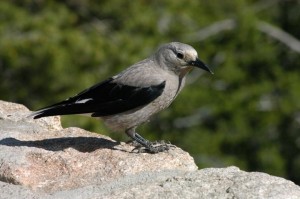
News/Reports
Whipsaw Creek Overview
Physical: The reserve is located near the dissected southwestern edge of the Thompson Plateau in the Similkameen River watershed. Regional soils are predominantly developed on glacial drift. The reserve straddles a low east-west oriented ridge and so has both southerly and northerly exposed slopes. Mean annual precipitation has been only slightly higher than that recorded at Princeton. This results in a moderately severe soil moisture deficit in summer.
See the complete overview from the BC Parks website: whipsaw_crk_er_ps
Biological:
Variations in aspect and soil texture result in communities ranging from open grassland to fairly dense forest. Patches of grassland on the lower south slope have been heavily grazed and are dominated by big sage and seral grasses such as Sandberg’s bluegrass which have replaced the normal climax dominant, bluebunch wheatgrass. Typical forbs in this type are sagebrush buttercup, western springbeauty, sticky cinquefoil, western groundsel, and rosy pussytoes. The upper south-facing slope supports well-spaced stands of ponderosa pine and Douglas-fir in which big sage is the dominant shrub and bluebunch wheatgrass the characteristic grass. Rocky Mountain and common juniper, junegrass, arrow-leaved balsam-root, diffuse knapweed, and kinnikinnick also occur on these slopes. The crest of the ridge supports vegetation transitional between the south and north slopes. Predominant species are ponderosa pine, Douglas-fir, and pinegrass; other plants include Saskatoon, prickly rose, balsam-root, and lomatium. On the north slope of the ridge the forest is made up almost entirely of a dense stand of Douglas-fir, and pinegrass dominates the understory.
Elk and mule deer are common in the area, particularly in winter and spring. Typical birds noted here are the Mountain Bluebird, Townsend’s Solitaire, Mountain Chickadee, Pygmy Nuthatch, American Kestrel, Magpie, Northern Flicker, Williamson’s Sapsucker, Clark’s Nutcracker, and Blue Grouse.
Flora: balsamroot, arrowleaf (Balsamorhiza sagittata)
bluegrass, Sandberg’s (Poa secunda ssp. sandbergii)
buttercup, sagebrush (Ranunculus glaberrimus)
cinquefoil, sticky (Potentilla glandulosa)
Douglas-fir (Pseudotsuga menziesii)
groundsel, western (Senecio integerrimus var. exaltatus)
junegrass (Koeleria macrantha)
juniper, common (Juniperus communis)
juniper, Rocky Mountain (Juniperus scopulorum)
kinnikinnick (Arctostaphylos uva-ursi)
knapweed, diffuse (Centaurea diffusa)
lomatium (Lomatium spp.)
pine, ponderosa (Pinus ponderosa)
pinegrass (Calamagrostis rubescens)
pussytoes, rosy (Antennaria rosea)
rose, prickly (Rosa acicularis spp. sayi)
sagebrush, big (Artemesia tridentata)
Saskatoon (Amelanchier alnifolia)
springbeauty, western (Claytonia lanceolata)
wheatgrass, bluebunch (Pseudoroegneria spicata)
Fauna
Bluebird, Mountain (Sialia currucoides)
Chickadee, Mountain (Poecilie gambeli)
Deer, Mule (Odocoileus hemionus)
Elk (Cervus Canadensis)
Flicker, Northern (Colaptes auratus)
Grouse, Dusky (aka Blue Grouse) (Dendragapus fuliginosus)
Kestrel, American (Falco sparverius)
Magpie, Black-billed (Pica hudsonia)
Nutcracker, Clark’s (Nucifraga columbiana)
Nuthatch, Pygmy (Sitta pygmaea)
Sapsucker, Williamson’s (Sphyrapicus thyroideus ssp. thyroideus) Red listed Endangered (2005)
Solitaire, Townsend’s (Myadestes townsendi)

